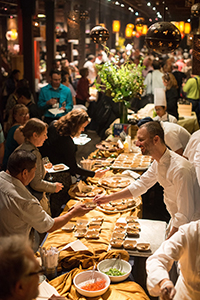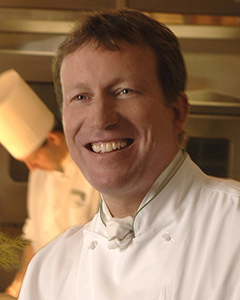Asian Flavors Come Alive at CIA’s Worlds of Flavor
Wednesday, 08 July 2015 03:00
 For 17 years, Worlds of Flavor in Napa Valley has been considered by the industry to be America’s most influential professional forum on world cuisines, food cultures and flavor trends. This year’s event didn’t disappoint.
For 17 years, Worlds of Flavor in Napa Valley has been considered by the industry to be America’s most influential professional forum on world cuisines, food cultures and flavor trends. This year’s event didn’t disappoint.
The trend to Asian tastes and techniques has been growing exponentially in the United States for years. It never came together with such enthusiasm and promise as it did at the 17th Worlds of Flavor® International Conference and Festival, held in April on the Greystone campus of The Culinary Institute of America in Napa Valley in front of an audience of more than 700 culinary, foodservice and hospitality professionals.
“The vastly varied cuisines of Asia are deeply rooted in traditions that have evolved over millennia,” said Greg Drescher, vice president of strategic initiatives and industry leadership at the CIA. “Today, American chefs are embracing and experimenting with what once was considered exotic. These foods and flavors are poised to continue their ascendance and become ever-bigger players in our national dining scene, whether it is in small independent restaurants, high-volume operations, food trucks or university cafés.”

 Serving a term of 18 months, Carroll is joined by John Sloane of Macau as vice president of the global organization serving 10 million chefs from more than 105 nations.
Serving a term of 18 months, Carroll is joined by John Sloane of Macau as vice president of the global organization serving 10 million chefs from more than 105 nations. Hot sauce is becoming ubiquitous in homes and at foodservice outlets, according to recent NPD Group research. And while the classic Louisiana type still rules, it’s by far not the only hot seller, evidenced by spreading-like-wildfire sales of fruity habanero and chipotle varieties.
Hot sauce is becoming ubiquitous in homes and at foodservice outlets, according to recent NPD Group research. And while the classic Louisiana type still rules, it’s by far not the only hot seller, evidenced by spreading-like-wildfire sales of fruity habanero and chipotle varieties. The 10 best-selling categories have shifted since just 2013, and today, cheese is still tops, but refrigerated pasta, functional beverages and nut and seed butters show big gains. Why should we care? Because foodservice is an increasingly important sector to that industry, with growth of nearly 31% since 2012.
The 10 best-selling categories have shifted since just 2013, and today, cheese is still tops, but refrigerated pasta, functional beverages and nut and seed butters show big gains. Why should we care? Because foodservice is an increasingly important sector to that industry, with growth of nearly 31% since 2012.